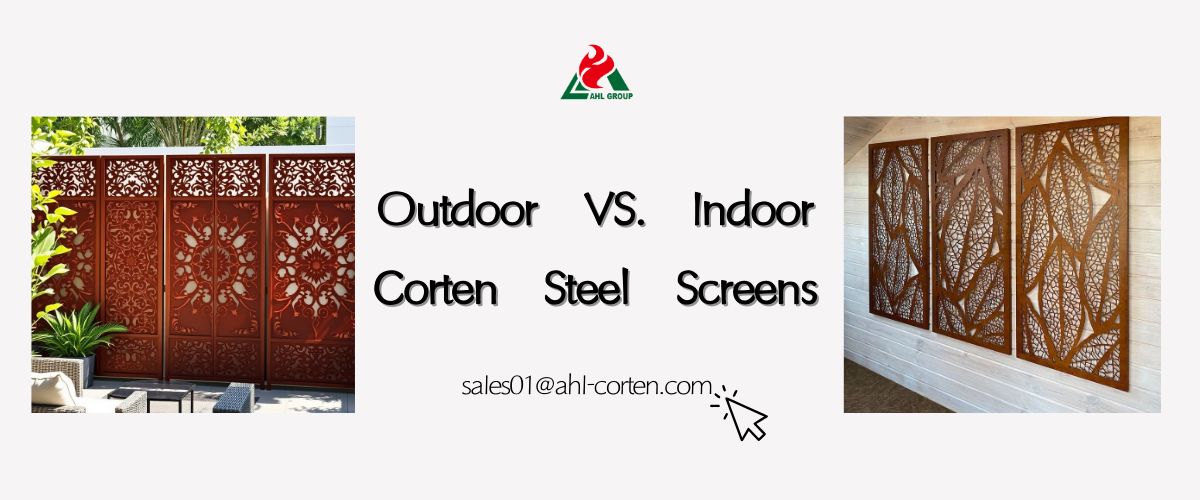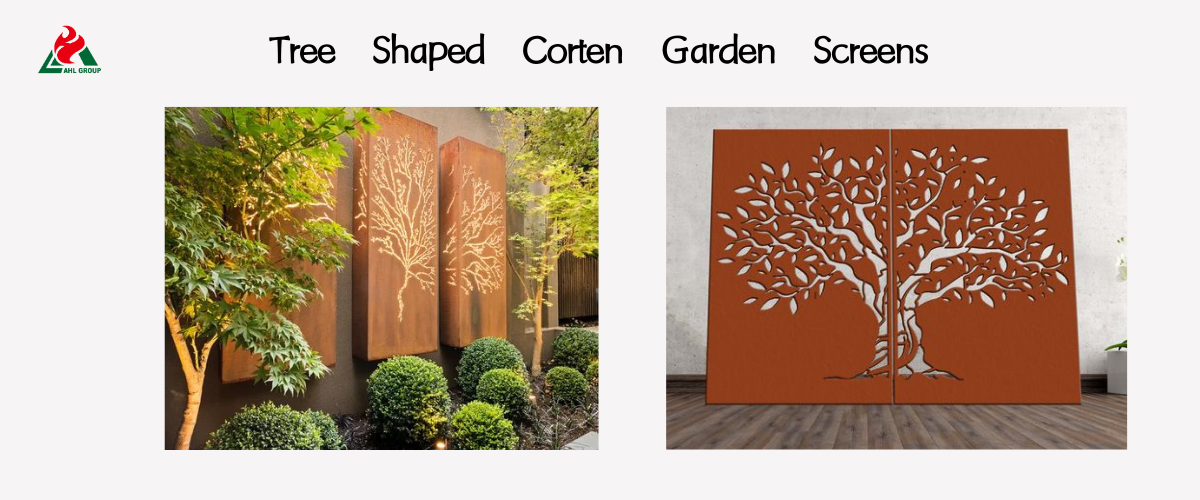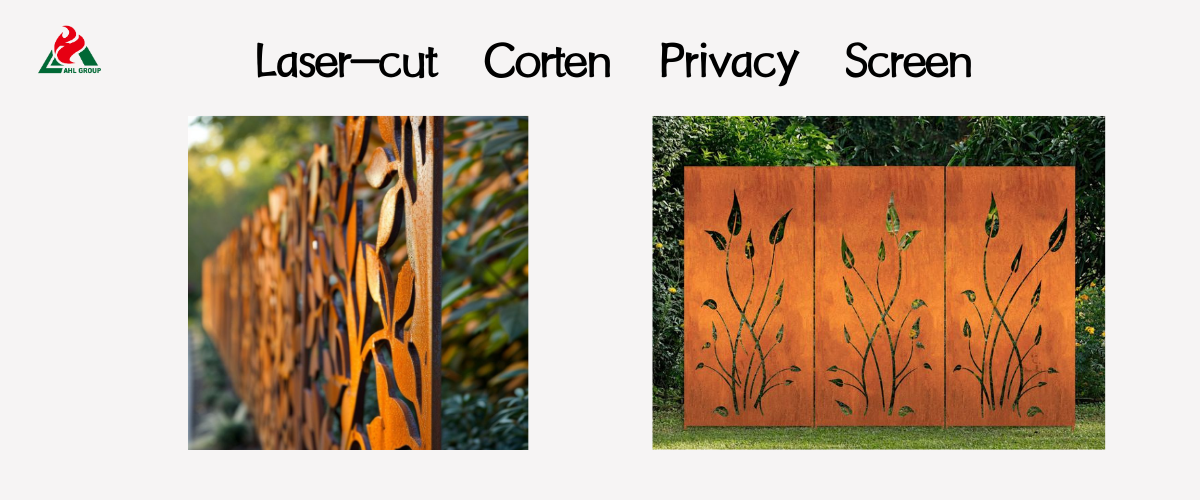As a leading manufacturer of architectural metals, AHL Group understands that selecting metal screen and cladding materials often requires balancing aesthetic and engineering requirements. While the unique rusting effect of weathering steel offers striking visual appeal, the weight difference between weathering steel and aluminum undoubtedly remains the most critical factor influencing structural design, installation logistics, and overall project budgets. This comprehensive guide provides comparative material density data and actionable metrics to help you accurately calculate structural loads for future projects, ensuring the selection of the optimal Corten steel or aluminum screens.


Introduction to Screening Material Properties
Material properties extend far beyond surface treatments and corrosion resistance; they determine installation feasibility and long-term safety.
Weight as a Critical Design Consideration
Throughout construction, weight directly translates into stress. For permanent architectural screens, weight dictates the dead load capacity required of existing structures, the specifications of anchoring hardware, and the complexity of foundation support. Neglecting the weight of weathering steel can lead to skyrocketing engineering modification costs or even structural failure. For AHL Group clients, calculating the total project weight—the combined mass of outdoor screen materials, frames, and fasteners—is an absolute priority before cutting any metal.
How Material Density Impacts Project Outcomes
Density, or mass per unit volume, is a fundamental physical property determining material weight and consequently influencing mechanical strength and stiffness (Young's modulus). High-density materials like weathering steel offer inherent rigidity and sound insulation but require specialized support structures. Low-density materials such as aluminum provide extreme lightness, significantly reducing structural support needs and simplifying logistics. AHL engineers utilize density values to predict deformation, vibration frequency, and overall lifespan for both weathering steel and aluminum screen solutions.
Breaking Down the Weight Difference
The core difference in weight is a result of the materials' atomic makeup.
Weight Characteristics of Weathering Steel
As a type of steel alloy (commonly referred to as weathering steel), its primary component is iron with a high atomic mass. This composition forms an extremely dense crystal lattice structure, and it is precisely this high density that endows weathering steel with exceptional mechanical properties—high tensile strength and outstanding resistance to physical impact. For designers seeking robust, enduring architectural screens, AHL Corten steel's weight becomes a critical attribute, providing maximum shear force counterweight.
Density: Approximately 490 lbs/cu ft
Aluminum Weight Characteristics
Aluminum, a lightweight non-ferrous metal located in the upper region of the periodic table, possesses an extremely low atomic mass. This lightweight property is the core advantage of aluminum screens. Through precision engineering, aluminum alloys achieve an exceptional strength-to-weight ratio while maintaining lightness, making them ideal for large-scale screens—particularly in scenarios requiring minimal structural load, such as rooftops, historic buildings, or cantilevered structures.
Density: Approximately 169 lbs/cu ft
Data Doesn't Lie: A Direct Comparison
Quantifiable differences highlight significant impacts on engineering specifications and logistics. For instance, a typical 4'x8' panel made from 1/8-inch material demonstrates a stark contrast: a Corten steel screen weighs over 160 pounds, while an aluminum panel of identical dimensions weighs only about 55 pounds. This stark contrast directly affects foundation size, structural support components, and labor costs.
Corten Steel Typically Weighs 2.5-3 Times More Than Aluminum
The density ratio between weathering steel and aluminum is approximately 2.9:1. This means a screen panel constructed with weathering steel carries nearly triple the structural self-weight of an aluminum screen wall of identical dimensions. Engineers must incorporate this weight multiplier into all foundation and installation calculations—a critical step in ensuring project safety and compliance.

Implications of the Weight Difference
The weight profile of the chosen material has tangible, measurable effects on the project lifecycle, from pre-construction to final sign-off.
Installation Labor and Equipment Requirements
Weight variations directly impact on-site logistics arrangements. Installing large AHL Corten screen panels typically requires cranes, telescopic boom lifts, or specialized heavy-duty lifting equipment. This not only increases equipment rental costs but also necessitates larger, more technically skilled installation teams. Conversely, aluminum screens are often lightweight enough to be manually handled and positioned by small teams, significantly reducing on-site construction time and labor costs—particularly advantageous in confined spaces or elevated work areas.
Structural Support and Foundation Requirements
When selecting weathering steel, structural designs must accommodate its substantial accumulated weight. This necessitates deeper, wider concrete foundations and larger steel frameworks to prevent deformation. Aluminum's extreme lightness allows engineers to optimize, or even eliminate, support structures, significantly reducing material costs and construction time—addressing the core demand behind users' long-term searches for “reducing building self-weight.”
Transportation and Handling Precautions
Transport capacity is a critical limiting factor. Due to the high material density, the number of Corten steel panels a single flatbed trailer can carry is extremely limited by weight constraints. Transporting the same coverage area of aluminum requires fewer freight trips, thereby reducing overall transportation costs, minimizing fuel consumption, and significantly lowering handling risks during transit. Efficient logistics form a core component of AHL Group's service delivery.
Performance Trade-Offs
Weight isn't just a cost factor; it defines how the screen will perform and endure over decades of exposure.
Durability and Weight: Striking the Right Balance
Aluminum offers unparalleled corrosion resistance while maintaining structural integrity, whereas weathering steel's greater mass provides exceptional physical durability. The substantial weight of AHL weathering steel makes it highly resistant to physical damage, accidental impacts, and vandalism, making it the material of choice for high-traffic commercial ground-level applications—where robust impact resistance is critical.
Weight-Derived Wind Resistance and Stability Advantages
When exposed to high winds, the inherent weight of weathering steel becomes an engineering advantage. Increased mass enhances panel inertia, helping dampen vibrations, minimize wind-induced oscillations, and provide greater stability during extreme weather. Consequently, for towering AHL freestanding screen walls or noise protection barriers, the weight of weathering steel is strategically leveraged as a passive stabilizing force.
Portability and Flexibility Advantages of Lightweight Design
For applications requiring modular design, seasonal disassembly, or installation on non-permanent structures—such as rooftop terraces or temporary courtyards—aluminum's lightweight properties are crucial. Its ease of handling allows aluminum screens to be repositioned or dismantled without lifting equipment. This flexibility and maintenance convenience are unmatched by high-density weathering steel.

Expert Weight Recommendations
AHL Group’s recommendation is always application-specific. Here is a guide to help align material choice with project needs.
When the extra weight of weathering steel is worth the investment
Choose AHL weathering steel when your project requires:
► Maximum rigidity: For towering freestanding partitions and privacy fencing.
► Ultimate durability: For public spaces vulnerable to accidental or intentional impacts.
► Permanent stability: High-wind zones or high-vibration environments where structural integrity is critical for seismic mitigation.
Maintenance-free, authentic Corten weathering steel aesthetics.
Applications for Aluminum's Lightweight Advantages
Select aluminum screens when your project prioritizes:
► Minimizing structural load: Ideal for retrofitting existing buildings, rooftops, or long cantilevered structures.
► Simplified installation: Suitable for confined sites requiring manual handling.
► Budget control: Avoids high costs associated with heavy-duty structural foundations.
Flexible powder-coated finishes, including weathering steel appearance options.
Hybrid Solutions and Alternative Options
For clients seeking the visual appeal of rusted steel while adhering to strict structural load-bearing constraints, AHL Group offers an innovative hybrid solution: lightweight aluminum panels paired with professional-grade, high-durability textured powder coating that precisely replicates the color and texture of weathered steel's rust layer. This approach satisfies aesthetic requirements while retaining the advantages of lightweight architectural screens.

Frequently Asked Questions About Corten Screen
Q: Can Aluminum Mimic the Appearance of Weathering Steel?
Absolutely. AHL Group employs a high-end multi-stage powder coating process to achieve a highly realistic “weathering steel effect” on aluminum panels. This solution is widely favored for rooftop installations, eliminating the heavy load of weathering steel structures while avoiding rust runoff (wastewater contamination) issues associated with genuine weathering steel.
Q: What About Installation Cost Differences?
While material costs vary, the long-term installation costs for large weathering steel projects can exceed those of equivalent aluminum installations by 20% to 40%. This cost increase stems primarily from exponential rises in expenses related to foundation reinforcement, specialized equipment rentals (cranes), and additional labor hours required to manage heavy panels.
Q: Weight Differences for 4x8 Panels?
The specific weight of a 4x8 panel depends on steel thickness. Using the common 1/8-inch thickness as an example, the difference is significant:
► Corten Steel (1/8-inch): Approximately 163 lbs
► Aluminum Sheet (1/8-inch): Approximately 55 lbs
This weight disparity exceeding 100 lbs per panel underscores the critical importance for engineers to reference weathering steel density for precise calculations.
Conclusion: Corten Steel vs. Aluminum Screens
Choosing between Corten steel and aluminum fundamentally involves weighing trade-offs: a decision between weight and flexibility. AHL weathering steel, with its substantial mass, delivers unmatched durability and structural rigidity; conversely, aluminum leverages its lightweight advantage to effectively reduce building dead load, control costs, and simplify complex installation processes. It is imperative to collaborate with structural engineers and AHL Group's technical team during the initial design phase to precisely calculate the required weight distribution curve for the architectural screen panel, ensuring structural safety and project success.


